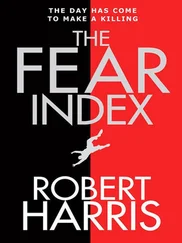Heidemann returned to Hamburg in a state of great excitement. In the Stern offices he described how he had actually held in his hands Hitler’s secret diary. He had managed to memorize a few sentences about Eva Braun and her two pet dogs which he recited endlessly.
Any journalist claiming to have stumbled upon such a scoop would have expected to face a certain amount of scepticism. Heidemann was greeted by an almost universal incredulity, bordering on derision. This was, after all, the man who had had two SS generals officiating at his wedding, who had spent his honeymoon looking for war criminals, who had claimed to have a recent photograph of Martin Bormann and who had thought he could prove the existence of secret dealing between Churchill and Mussolini. When Heidemann broke the news of the Hitler diary to Henri Nannen in the Stern canteen, the response was frankly insulting. According to Nannen: ‘My word-for-word answer was: “Spare me all that Nazi shit. I don’t want to hear about it and I don’t want to read about it.”’ Heidemann fared no better with Peter Koch, the magazine’s aggressive deputy editor, who treated him as if he were mentally deranged. ‘Keep away from me,’ he shouted, ‘with your damned Nazi tic.’ He warned Heidemann to stay off subjects connected with the Third Reich and added, ominously, that ‘he’d better produce something soon’. ‘The trouble with Stern’, complained Heidemann bitterly, ‘is they don’t want to hear about history any more.’
Only one man seemed to take Heidemann seriously. He was Thomas Walde, an earnest and sober character in his late thirties whose chief distinguishing feature was a large brown moustache. Walde had joined Stern in 1971 as an editorial assistant and had risen to become news editor. When, at the beginning of 1980, Stern had established a new department specifically to deal with historical stories, Walde had been put in charge of it. He had been in his office little more than a week when Heidemann turned up asking if he could come and work for him. Leo Pesch, Walde’s young assistant, recalled how Heidemann told them ‘he had seen a Hitler diary in the possession of a South German collector’. He would not stop talking about it. One evening in April, he threw a party for the history department on board Carin II . ‘The idea,’ said Walde, ‘was to meet outside the context of the normal office routine. We wanted to get to know the boat. And we wanted to discuss future projects.’ Among those ‘future projects’ was the Hitler diary.
Walde was interested in Heidemann’s tale. The problem was that almost nobody else was. ‘Heidemann and Koch didn’t get on,’ he recalled, ‘and Koch opposed Heidemann’s request to research Nazi topics.’ Walde therefore decided to embark on what was to prove a disastrous strategy. Without telling Koch and the other editors he went behind their backs and commissioned Heidemann to search for the Hitler diaries. ‘I didn’t believe in their existence,’ he claimed later. ‘I just hoped Heidemann would do enough research to kill the subject once and for all.’
The most obvious course was to try to discover the identity of the man who had supplied the diary to Stiefel; once he had his name, Heidemann reasoned, he could approach him directly. Stiefel, however, flatly refused to cooperate. Therefore, in the summer of 1980, Heidemann once again turned to the man from whom he had first learned of the diary’s existence, Jakob Tiefenthaeler. Tiefenthaeler, who had by now given up his attempts to sell Carin II , told Heidemann that he understood the supplier was an antique dealer in Stuttgart named Fischer. Armed with this information, Heidemann and Walde waited one night until everyone had gone home and then began combing through every Fischer in the Stuttgart telephone directory: a task – given the commonness of the name Fischer in Germany – not unlike searching an English phone book for a particular Smith. When this yielded nothing, Walde asked Stern ’s correspondent in Stuttgart to make discreet inquiries around the city about this mysterious dealer; again, there was no trace.
With this line of inquiry temporarily at an end, Heidemann adopted a fresh tactic. He knew from Stiefel that the diary supposedly came from a plane crash. From O’Donnell’s book, Die Katacombe , and Baur’s, Hitler’s Pilot, he knew of the mysterious documents shipped out of the bunker whose loss had so distressed Hitler. He was convinced that this must be where Stiefel’s diary originated. If he could substantiate the story of the plane crash by pinpointing its location it would be a strong argument in favour of the diary’s authenticity. On Monday, 13 October 1980, he rang the Wehrmacht information bureau, the Wehrmachtsauskunftstelle , in Berlin to inquire if they had any information about the pilot of the missing plane, Major Friedrich Gundlfinger. He was not hopeful. Given the chaos in Germany in those closing days of the war it was asking a great deal to discover the fate of a single aircraft after an interval of thirty-five years. Heidemann was therefore surprised when, after a pause, a voice at the other end of the line replied that the bureau did indeed have records relating to Major Gundlfinger: he had died in a plane crash on 21 April, close to the little village of Boernersdorf near Dresden in East Germany on 21 April 1945; he was buried close to the crash site; his death certificate in the local register was 16/45.
From this moment, Heidemann and Walde were hooked and the tempo of their search quickened. Two days after Heidemann’s discovery of the location of the crash site, on Wednesday 15 October, Walde travelled to East Berlin. Through a contact in the East German security service he arranged a visit to the Dresden area to be undertaken in one month’s time. The cover story was that Heidemann was a relative of one of the victims of the plane crash. On Monday 27 October, Heidemann went to see Hans Baur in Herrsching, who once again confirmed the details of Gundlfinger’s last flight.
Heidemann’s unexpected success left Thomas Walde with a problem and in the last week of October, while Heidemann was talking with Hans Baur, he took the opportunity of a vacation to think things over.
For the past three years he and a close friend, Wilfried Sorge, had left their wives and families and gone on an annual walking holiday together. The two men, almost the same age (Sorge was three years younger than Walde), had known one another for the best part of twenty years. They had both attended the same school in the small town of Uelzen, not far from Hamburg. Now they both worked for the same company: Walde as a Stern journalist, Sorge as a junior executive with Stern ’s owners, Gruner and Jahr. They kept few secrets from one another.
Accordingly, when they were safely alone in the middle of a Bavarian forest, Walde told Sorge of his involvement with the Hitler diaries and of the difficulties he was now in. The trouble, said Walde, was that Peter Koch, who was likely to take over from Henri Nannen in the New Year as editor-in-chief, had expressly ordered Heidemann ‘not to pursue any further researches into the Nazis’; Walde had disobeyed him. Meanwhile, Heidemann’s tale about Hitler’s diaries, far from being ‘killed’ by further investigation, was beginning to look as if it might be true. To compound his problems, Walde was about to undertake what he described as a ‘risky journey’ to East Germany, unable to tell his superiors about it because he had been deceiving them for the past six months. ‘Herr Sorge advised me to take the chance,’ recalled Walde.
Agreeing to keep the conversation confidential, they continued their walk.
Читать дальше












